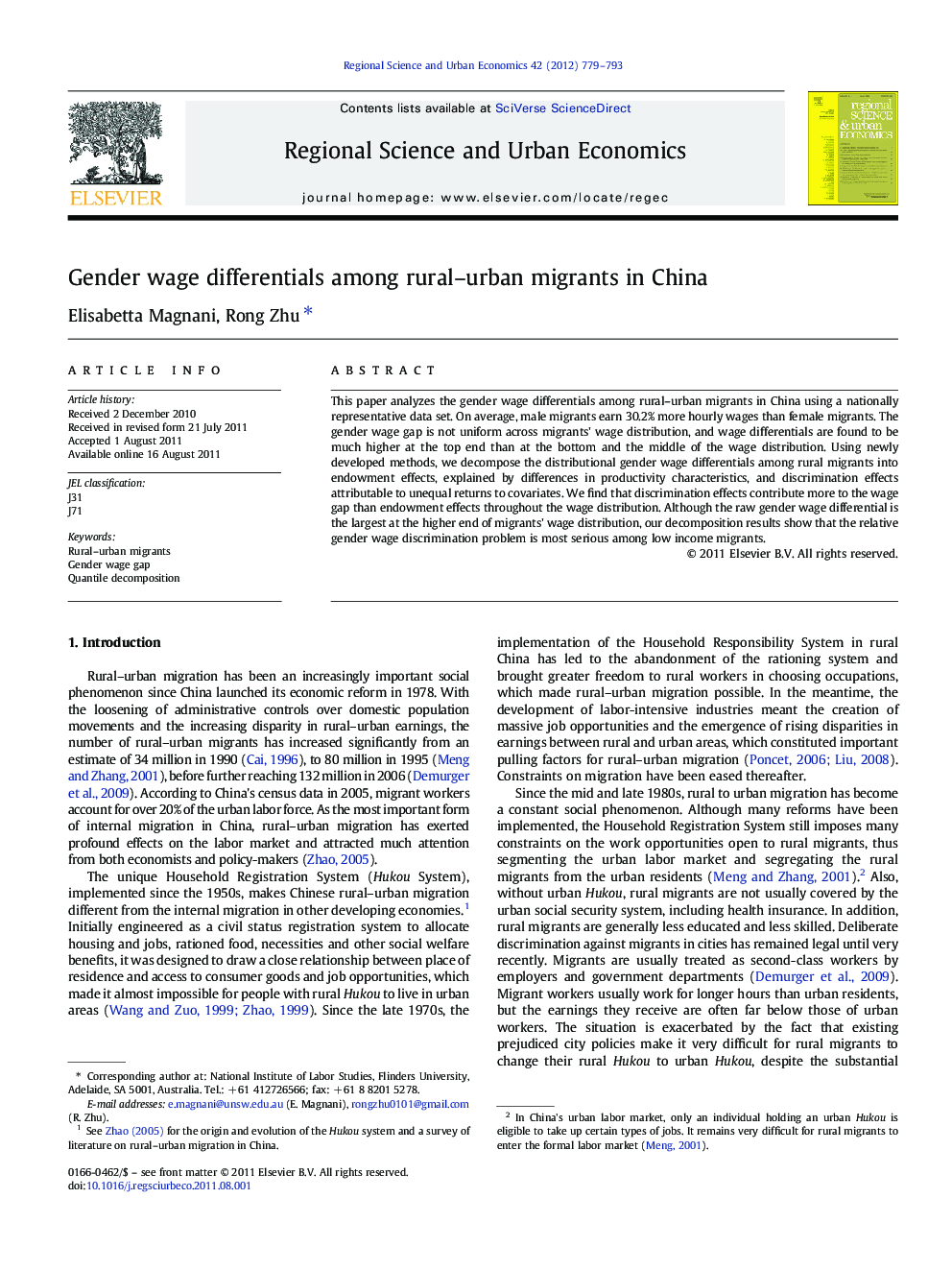| Article ID | Journal | Published Year | Pages | File Type |
|---|---|---|---|---|
| 983714 | Regional Science and Urban Economics | 2012 | 15 Pages |
This paper analyzes the gender wage differentials among rural–urban migrants in China using a nationally representative data set. On average, male migrants earn 30.2% more hourly wages than female migrants. The gender wage gap is not uniform across migrants' wage distribution, and wage differentials are found to be much higher at the top end than at the bottom and the middle of the wage distribution. Using newly developed methods, we decompose the distributional gender wage differentials among rural migrants into endowment effects, explained by differences in productivity characteristics, and discrimination effects attributable to unequal returns to covariates. We find that discrimination effects contribute more to the wage gap than endowment effects throughout the wage distribution. Although the raw gender wage differential is the largest at the higher end of migrants' wage distribution, our decomposition results show that the relative gender wage discrimination problem is most serious among low income migrants.
► This paper analyzes the gender wage differentials among rural–urban migrants in China. ► Gender wage differentials are the highest at the top end of migrant's wage distribution. ► We identify the reasons behind the varied distributional wage differentials with decomposition methods.
